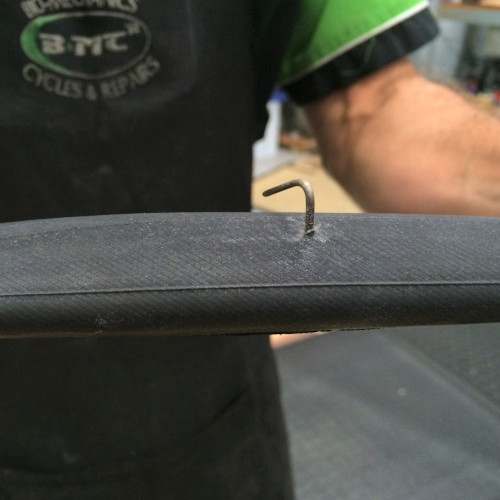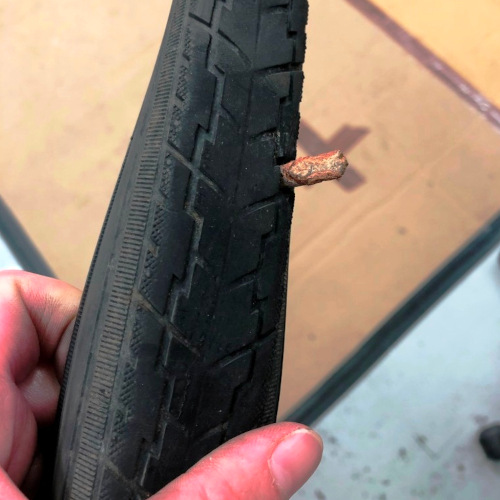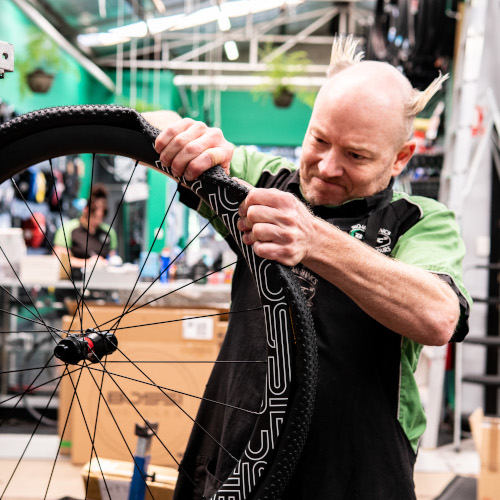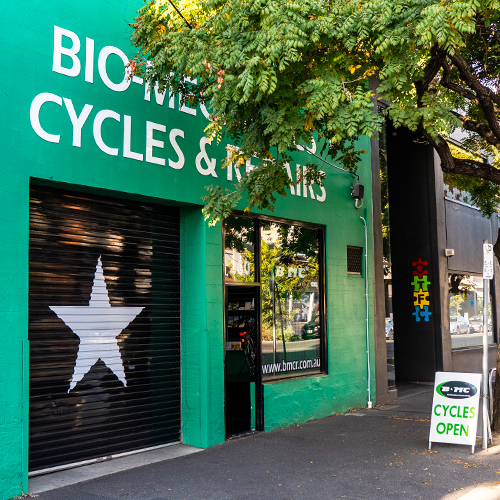Repairs In The Wild: Punctures


So you're out for a ride and hear that dreaded 'ssssss'. Yup, you've got a puncture, and you're far from home. Now what?
I use tubeless, so I don't need to read this, do I?
You probably do. Sealant dries up over time and needs to be replenished. (We see a lot of tubeless set-ups with no sealant left.) If you don't top it up, the tyre will start unexpectedly leaking air.
It's also worth mentioning that tubeless systems can still get punctures, so don't think you're now safe from thorns, glass, etc., just because you've gone tubeless. You've got some attitude, mister!
Where were we? Oh, yes, puncture repairs.
Let's fix some stuff!
Firstly, get out your repair kit.
Er...I don't have a repair kit.
OK, while you're waiting for someone to come and pick you up, make a note to put a kit together when you get home.
Your repair kit needs:
- two tyre levers
- glueless patches
- a spare tube
- a piece of high-density cloth (canvas = great, gaffa tape = acceptable; even a folded $5 note works in an emergency) and
- a pump.
Now, let's try that again.
Remove the wheel
For front wheels with rim brakes, release the brake, undo the quick release skewer and unwind the QR nut.
For front wheels with disc brakes, just undo the skewer.
For rear wheels, change the gears so the chain is on the smallest rear cog, then release the brake/undo the QR skewer and remove the wheel.
If you've got bolt-up hubs, you may need a set of allen keys on hand, so include a mulit-tool in your repair kit.
If you've got old-style 15mm nuts, it's probably best just to fit thorn-resistant tubes and sealant, because 15mm spanners are a pain in the ass to carry around.
It's leverin' time
Release one of the tyre's beads by pushing the side of the tyre towards the centre of the rim. Now place one tyre lever between the bead and the rim, then lift the tyre over the edge. Insert the second lever about 5 cms further around, again lifting the tyre. Repeat until you can pull the tyre off with your hands.

Why did I get a puncture, anyway?
Inspect the tyre carefully inside and out for the cause. If you're running tubeless, there should be a spot where sealant has sprayed out (if you've been topping up your sealant like you were meant to).
If you can't find any sharp objects or cuts, inflate the old tube to find the cause. Once you've found the hole in the tube, use the valve as a reference point and check the corresponding area on the tyre. (This is one reason why we line the tyre logo up with the valve: it makes it much easier to find puncture sites.)
Two holes close together (like a snake bite) equals a pinch flat, whereas a hole on the inside edge of the tube could mean a problem with the rim: check it for protruding spokes or sharp edges.
Once again, with a tubeless system, if you remove the tyre and find no sharp object but also no sealant, this may be the cause of the leak. You'll need to fit a tube to get home (so this article is still relevant).

Refit the tyre
Check the tyre's sidewall to see if there's an arrow indicating which way the tread needs to go. Put one bead back on the rim.
Inflate the new tube a little and fit the valve into the rim. Now start stuffing the tube evenly inside the tyre.
If you've found a cut in the casing, use the cloth/tape/cashola to cover the hole from the inside as you fit the tube. To fit the second bead, begin opposite the valve and push the bead over the rim with both hands, working evenly around to the valve until it starts to get tight.

Now check that the bead is seated as low in the rim as possible (and that the tube isn't stuck between the bead and rim) by going along and rolling the tyre back and forth. Generally this step is enough to get the rest of the tyre onto the rim, but if you do need the levers, be extra careful not to pinch the tube!
Seat the valve
Now a critical step: push the valve stem up into the tyre and down again. This seats the valve properly. Failure to do this often causes the tyre to blow off the rim. It's noisy as hell, and nobody's nerves need this.
Inflate
Finally, pump up the tyre. Don't forget to support the valve so you don't break it off with your pump.
Refit the wheel, connect your brakes (if need be), and there you go!
A note on glueless patches
Glueless patches are for the times when you get another puncture on the same ride. They're not 100% reliable but will get you home.
In this situation, remove the tube, inflate it, and rotate it close to your cheek to find where the air's escaping. When you've found the hole, polish the tube on your clothes to remove dust or dirt, whack the patch on, and finish as before.


